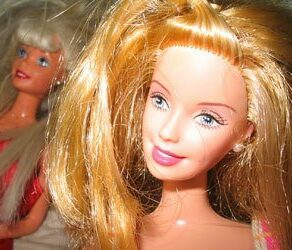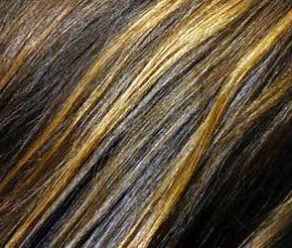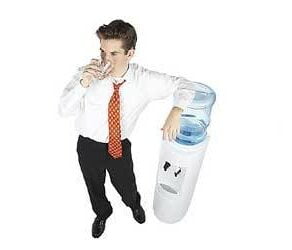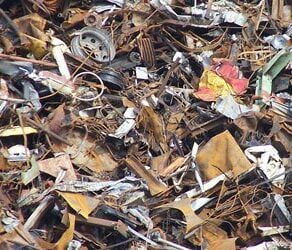Why it’s Important to Clean your Hairbrushes
A dirty hairbrush can contribute to all sorts of negative effects. Dirty brushes can harbor bacteria, dust, and other contaminants with irritate your scalp and can cause dandruff or odors. Hair products also build up on your brush and and can get deposited onto your scalp – causing flaking and itching.

Can a dirty hairbrush cause dandruff?
Yes, a dirty hairbrush can absolutely contribute to dandruff! Most dandruff is caused by yeast overgrowth. When you fail to regularly clean your brush, it can become a breeding-ground for yeast and bacteria, applying a fresh supply onto your clean, moist scalp every time you brush your hair.
What is the white stuff on my hairbrush?
The white stuff on your hairbrush is likely a mix of product and mineral build-up from your hair along with dead skin cells and dandruff. Most products will dry to an off-white, greyish material that collects in small clumps.
How do you stop lint from your collecting on your hairbrush?
The best way is quite simply to clean your hairbrush regularly. Depending on what / how much product you use in your hair, build-up is unavoidable. Other styling products such as blow dryers are also prone to collecting lint and can deposit it onto your hair while you are brushing, leading to a brush full of lint.
What is that grey lint on your hairbrush?

Grey lint is usually either dead skin cells that have built up, or accumulated hair product. As long as the lint isn’t moving you can just clean it and not worry.
How to Clean a Hairbrush: 4 Easy Methods
To avoid damaging your hair brush, check the care instructions from the manufacturer. Certain brushes that employ natural bristles or wood can become damaged if they are submerged.
First, Remove the Hair
Before cleaning your hairbrush get as much hair and gunk out as you can manually:
- Use a pointy tool like a screwdriver or a hair pick to gently loosen and remove hair.
- Use a comb to gently remove tangles and excess hair.
- Use another brush to gently pull out tangles.
Clean with Warm, Soapy Water
The simplest method for cleaning your hairbrush is to submerge it in warm, soapy water and scrub it with a toothbrush.
- Start by manually removing hair and build-up from the bristles with your fingers.
- Fill a bowl or your sink with warm water.
- Add a small amount of mild shampoo or dish soap and mix it up.
- Submerge your hairbrush and scrub with a toothbrush to remove product build-up and dirt.
- Once it’s clean, rinse under running water and allow it to dry.
This method is only recommended for natural bristle brushes, as synthetic bristles may be damaged by the water.
Clean with Baking Soda
Baking soda can be employed for a slightly more abrasive cleaning:
- Start by manually removing hair and build-up from the bristles with your fingers.
- Fill a bowl or your sink with warm water.
- Add enough baking soda to render the water cloudy.
- Submerge your hairbrush into the water and let it sit for 10-15 minutes.
- Scrub the hairbrush with a soft bristled toothbrush to remove dirt and product.
- Once it’s clean, rinse under running water and allow it to dry.
Clean in the Washing Machine
Certain brushes can be cleaned in the washing machine – with two caveats: 1. Make sure that your brush can be completely submerged in water, and 2: The brush should be placed into a pillowcase, sock, or other heavy-ish bag to prevent it from damaging your clothing during the wash.
Use the cold cycle and a mild detergent. Do not run it through your dryer, instead, take it out and let it air dry.
Clean in the Dishwasher
If your hairbrush is made of plastic, it can be cleaned in the dishwasher. Wash it on the top rack on a normal cycle. Turn off any heat-dry settings to avoid damaging the bristles.
How to Sanitize a Hairbrush
It can be important to regularly sanitize your hairbrush – especially if you are fighting dandruff or cradle cap. Here’s a simple method for sanitizing your hairbrush using vinegar, bleach, or ammonia.
Soaking in Vinegar Alcohol or Bleach

To sanitize your hairbrush using vinegar, bleach or alcohol, follow these steps:
- Fill a small bowl with warm water.
- If using bleach, use no more than a capful for a large bowl. About 1/2 tsp for a small bowl as large as your brush.
- If using vinegar, add enough to achieve a 25% / 75% ratio of vinegar / water.
- If using rubbing alcohol, add enough to achieve a 50/50 mix of alcohol and water.
- Submerge the brush in the mixture and let it soak for 5-10 minutes.
- Rinse the brush thoroughly to remove the sanitizer.
- Dry the brush completely before using it again.
Keep in mind that this is only suitable for synthetic bristles. Natural bristles may be damaged by strong cleaning agents. The sanitization solution can be stored in an airtight container and reused for several months before needing to be replaced.








Leave a reply